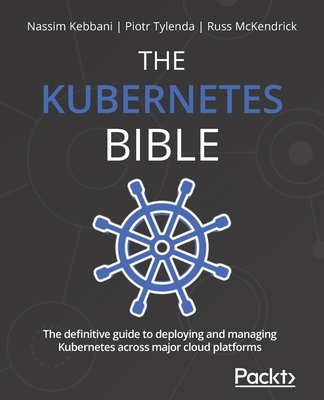Kubernetes Management Design Patterns: With Docker, CoreOS Linux, and Other Platforms
暫譯: Kubernetes 管理設計模式:使用 Docker、CoreOS Linux 及其他平台
Deepak Vohra
- 出版商: Apress
- 出版日期: 2017-01-29
- 售價: $2,020
- 貴賓價: 9.5 折 $1,919
- 語言: 英文
- 頁數: 399
- 裝訂: Paperback
- ISBN: 148422597X
- ISBN-13: 9781484225974
-
相關分類:
Docker、Kubernetes、Linux、Design Pattern
海外代購書籍(需單獨結帳)
商品描述
- Supports most cloud providers (including Amazon AWS EC2 and Google Cloud Platform) and virtualization platforms (such as VMWare and VirtualBox)
- Provides Cloud-Config for declaratively configuring for OS items such as network configuration (flannel), storage (etcd), and user accounts
- Provides a production-level infrastructure for containerized applications including automation, security, and scalability
- Leads the drive for container industry standards and founded appc
- Provides the most advanced container registry, Quay
- Use Kubernetes with Docker
- Create a Kubernetes cluster on CoreOS on AWS
- Apply cluster management design patterns
- Use multiple cloud provider zones
- Work with Kubernetes and tools like Ansible
- Discover the Kubernetes-based PaaS platform OpenShift
- Create a high availability website
- Build a high availability Kubernetes master cluster
- Use volumes, configmaps, services, autoscaling, and rolling updates
- Manage compute resources
- Configure logging and scheduling
商品描述(中文翻譯)
將容器叢集管理提升到下一個層次;學習如何在 CoreOS 上管理和配置 Kubernetes;並應用適合的管理設計模式,如 Configmaps、自動擴展、彈性資源使用和高可用性。討論的其他功能包括日誌記錄、排程、滾動更新、卷、服務類型和多雲提供者區域。
Kubernetes 中模組化容器服務的基本單位是 Pod,這是一組具有共同檔案系統和網路的容器。Kubernetes Pod 抽象化使得容器化應用程式的設計模式類似於物件導向設計模式。容器提供了一些與軟體物件相同的好處,如模組化或包裝、抽象和重用。
本書大多數章節使用 CoreOS Linux,其他討論的平台包括在 AWS 上的 CentOS 與 OpenShift、Debian 8 (jessie) 和 Google Container Engine 上的 Debian 7。
CoreOS 是主要焦點,因為 Docker 在 CoreOS 上是預先安裝的。CoreOS:
- 支援大多數雲提供者(包括 Amazon AWS EC2 和 Google Cloud Platform)及虛擬化平台(如 VMWare 和 VirtualBox)
- 提供 Cloud-Config 用於聲明式配置作業系統項目,如網路配置(flannel)、儲存(etcd)和使用者帳戶
- 提供容器化應用程式的生產級基礎設施,包括自動化、安全性和可擴展性
- 引領容器產業標準的推動,並創立了 appc
- 提供最先進的容器註冊中心 Quay
Docker 於 2013 年 3 月以開源形式發布,並成為最常用的容器化平台。Kubernetes 於 2014 年 6 月開源,並成為最廣泛使用的容器叢集管理工具。CoreOS Linux 的第一個穩定版本於 2014 年 7 月發布,並自此成為最常用的容器作業系統之一。
**您將學到的內容**
- 使用 Kubernetes 與 Docker
- 在 AWS 上的 CoreOS 上創建 Kubernetes 叢集
- 應用叢集管理設計模式
- 使用多雲提供者區域
- 與 Kubernetes 和 Ansible 等工具合作
- 探索基於 Kubernetes 的 PaaS 平台 OpenShift
- 創建高可用性網站
- 建立高可用性的 Kubernetes 主叢集
- 使用卷、configmaps、服務、自動擴展和滾動更新
- 管理計算資源
- 配置日誌記錄和排程
**本書適合誰**
Linux 管理員、CoreOS 管理員、應用程式開發人員和容器即服務(CAAS)開發人員。需要具備一些 Linux 和 Docker 的先備知識。需要對 Kubernetes 有初步了解,例如創建叢集、創建 Pod、創建服務以及創建和擴展複製控制器。關於 Docker 和 Kubernetes 的入門資訊,請參考 Pro Docker(Apress)和 Kubernetes Microservices with Docker(Apress)。同時也需要對使用 Amazon Web Services (AWS) EC2、CloudFormation 和 VPC 有一些先備知識。










